The Ultimate Guide to Ice Bath and Cold Plunge Temperatures & Time
Finding Your Ideal Cold Plunge Temperature
Taking the plunge into an ice-cold bath or cold plunge can be an invigorating experience with many potential health and wellness benefits. However, determining the ideal cold plunge temperature for your body takes some experimentation. Plunging into water that is too cold can cause shock, but water that is not cold enough will not trigger the desired effects.
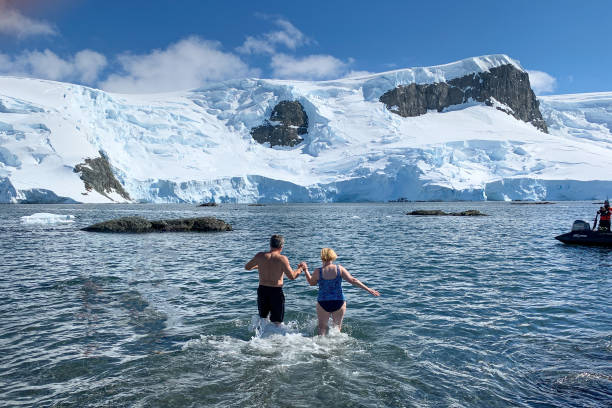
By understanding the recommended temperature range, carefully adjusting the cold plunge tub or ice bath temperature, and gradually building your cold tolerance, you can find the perfect balance to reap the full benefits of cold water immersion safely.
tub plunge tub cold plunge tub cold therapy
What is the Recommended Cold Plunge Temperature Range? water temperature ideal temperature
Most experts agree that the ideal water temperature for a revitalizing cold plunge generally falls between 50 and 59°F (10 and 15°C). However, the optimal temperature range depends on your comfort level, goals, and prior experience with cold exposure.
cold shower cold immersion avoid cold cold tub cold plunge therapy
Cold plunging or ice bathing significantly below 50°F is not recommended, especially for beginners. This icy water can cause pain, constrict blood vessels, and strain your heart.
ice baths and cold cold water therapy ideal temperature range
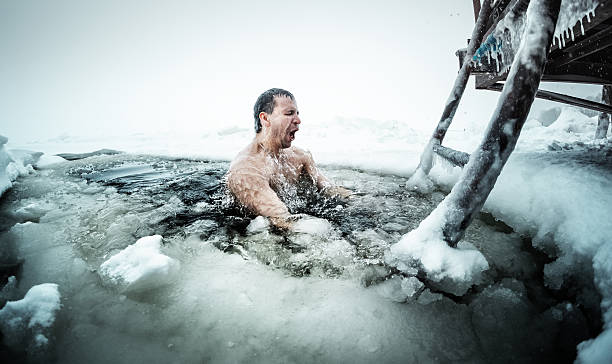
On the other hand, water temperatures above 59°F, while refreshing, will not elicit the same biological responses and desired benefits. The colder the temperature, the more intense the effects.
add ice temperature of the water ice barrel plunge experience cold plunging may
While most experts caution against exceeding water temperatures below 50°F, starting with 50-degree water was tolerable. After gradually building up my cold tolerance, I gradually decreased my plunge temperatures to the mid-30s °F.
However, it took many weeks of conditioning before I could tolerate water below 50°F
cold tub potential risks cold water cold exposure
I do not recommend such extreme cold plunging for beginners. Work your way down slowly and listen to your body's limits. The colder the temperature, the shorter the safe duration.
How Cold Should Your First Ice Bath Be?
If you're new to cold plunging, start with a more moderate temperature between 55-59°F (13-15°C) for your first few ice baths. This will allow your body to adjust to the cold gradually.
desired temperature warmer temperatures frequency of cold potential benefits
Add just a few trays of ice and monitor your comfort level. Many first-timers find even 59° degrees surprisingly chilling!
benefits of cold exposure sensitivity to cold associated with cold therapy or cold water immersion
As your cold tolerance increases, you can experiment with lowering your ice bath temperature in increments down to 50°F (10°C). See how your body responds to the cold over multiple exposures.
15 degrees celsius adjust the temperature cold plunge experience comes to cold plunge temperature body adjust to the cold water in your ice bath
Although the recommended guideline for beginners is to acclimate to colder water temperatures gradually, I understand the desire to jump in head first without dipping your toes.
ice bath routine benefits of cold therapy ice baths and cold plunges hot and cold potential health benefits cold water temperatures
For those daring souls ready to plunge into intensely cold water, take one deep breath to brace yourself before fully submerging. Expect your body to naturally want to jump back out as soon as the cold shock hits.
optimal temperature range for cold immersed in cold water amount of ice response to the cold exposed to cold incorporating cold top cold get used to cold
Attempt to endure the initial pain for 3-5 minutes, knowing that is likely the worst it will feel. Once you make it through those first agonizing minutes, you can be confident you pushed through the limits and will get easier with each subsequent plunge.
important to avoid cold ice bathers temperature of your water end a cold prior to cold cold thermogenesis time to recover between sessions interested in cold
Just don't stay in too long on the first attempt to avoid hypothermia.
But conquering the extreme cold immediately can quickly build your tolerance. Listen to your body and be safe, but sometimes, the icy plunge has to be done!
Important Cold Plunge Safety Tips
- Always check with your doctor before cold plunging, especially if you have any health conditions. Avoid extreme cold exposure if at risk.
- Start slowly and gradually decrease water temperature over multiple sessions, not all at once.
- Limit your first few cold plunges to 3-5 minutes max to prevent hypothermia.
- Never plunge into cold water alone in case of an emergency.
I personally broke every single one of these rules when I initially started cold plunging. I just jumped into the river in January by myself without any Wim Hoff breathing techniques or mental preparation. The water wasn't as bad as the wind afterward :) Just make sure to keep yourself safe when doing dumb things like me.
health benefits of cold best cold plunge tubs effects of cold temperature and duration power of cold
What are the Benefits of Colder Temperatures?
Many proponents of cold therapy and ice baths recommend colder temperatures between 50-55°F (10-13°C) to reap the most benefits. Here's why:
- Colder water triggers more rapid vasoconstriction and blood flow to vital organs. This activates your sympathetic nervous system.
- Plunging into colder water helps release more cold-shock proteins and anti-inflammatory cytokines.
- Colder temperatures may increase metabolism, burn calories, and increase brown adipose tissue.
- Frequent exposure to icy water can increase willpower, focus, and cold tolerance.
If you can eventually work your way down to 50-55°F, you may experience more significant results from cold water immersion. But always begin gradually.
How Long Should You Stay in Different Temperature Ranges? cold plunge therapy cold water therapy ideal temperature range
To maximize benefits while minimizing risk, follow these recommended time limits for different cold plunge temperature ranges:
- 50-55°F (10-13°C) - Only 1-3 minutes, especially for beginners. Do not exceed 5 minutes in this range.
- 55-59°F (13-15°C) - 3-5 minutes or up to 10 minutes for very experienced cold enthusiasts.
- 59-70°F (15-21°C) - 10-15 minutes is safe for most people. Provides a refreshing cool down without intense shock.
Listen to your body carefully and get out of the cold if you start shivering violently or experience any warning signs like slowed breathing. Never force yourself to stay in longer than feels safe.
Now again, these are the recommended guidelines (more particularly for beginners). If you consider yourself a more seasoned plunger, you can get the water down to just above freezing, especially if you use a Morozko Prism Forge and aim for around 3 minutes.
plunge experience benefits of cold exposure take the plunge cold plunge experience body adjust to the cold
Tips to Reach Colder Temperatures
If you want to gradually work your way down to the recommended 50-55°F range, here are some tips:
- Add more ice - For an ice bath, gradually add more ice to lower the temperature. Choose a large block of ice for slower melting.
- Pre-cool first - Lower your body temperature before cold plunging by taking a cool/cold shower beforehand.
- Use a thermometer - Precisely measure the water temperature instead of guessing.
- Take breaks between sessions to allow your body to recover and reset.
- Slowly plunge up to your neck rather than jumping straight in to minimize shock.
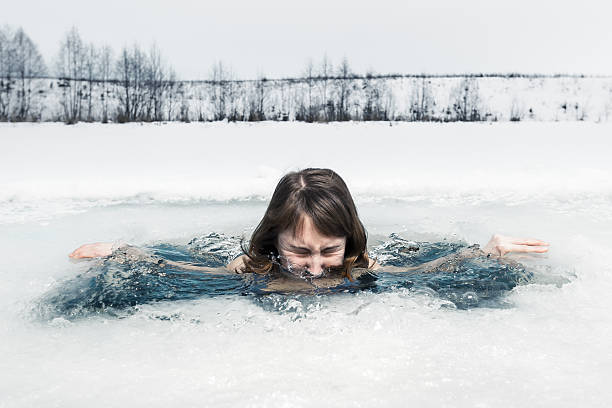
Listen to Your Body
Remember, there is no single perfect cold plunge temperature that applies to everyone. You may find your ideal temperature is slightly outside the commonly recommended range based on your unique physiology and preferences.
As you experiment with colder water, consider how your body reacts and what feels tolerable vs. unbearable. Avoid shivering that won't stop or a drastic drop in body temperature. make cold plunging
Don't push past your limits too quickly in an attempt to reap benefits. This can be dangerous. Build cold tolerance slowly over time for maximum results.
make cold plunging
Maximizing the Benefits of Your Cold Plunge Routine
Once you've identified your ideal personal cold plunge temperature, it's time to develop a consistent plunge routine.
Proper timing, frequency, and duration are crucial to maximizing both the safety and overall benefits of your ice baths or cold plunges.
Follow these best practices to make cold water immersion a positive part of your regular wellness regimen.
Optimal Time of Day to Take a Cold Plunge
The best time to take a revitalizing cold plunge is often first thing in the morning, right after you wake up. Here's why:
- Your cortisol levels are naturally highest in the morning, making it easier to handle the stressful stimulus of sudden cold.
- Cold exposure triggers the release of catecholamines like norepinephrine. This sets you up for an energized, focused day.
- Immersing your body in cold water first thing can boost mental and physical performance all day long.
However, experiment to see if evening cold plunges help you wind down and get higher quality sleep. Some people report better sleep when taking the plunge 1-2 hours before bed.
Aim to be consistent with the timing to reap the full rewards. Just be sure to allow enough time to warm back up afterward.
Suggested Cold Plunge Frequency and Duration
Finding the right frequency and duration for your cold plunges depends on your individual resilience and goals. Here are some evidence-based recommendations:
- For most fitness and health goals: 3-6 cold plunges per week, ramping up frequency slowly if you're new to it.
- Duration: 1-3 minutes for very cold water below 55°F (13°C); 3-10 minutes between 55-59°F (13-15°C).
- Rest at least 1 day between cold exposures when first starting. Slowly work up to daily plunges as tolerated.
- Consistency over time is critical. The benefits are cumulative.
Always start conservatively until you know how much cold your body can handle. Remember that more extreme temperatures warrant shorter plunge durations for safety.
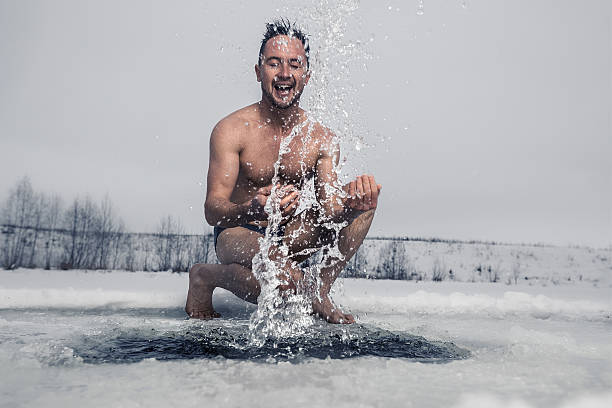
Allow Time for Rest & Warm Up Afterwards
It's crucial to warm up and recover between back-to-back cold plunges fully. Limit consecutive day plunging when first starting out.
After exiting cold water, be sure to:
- Pat yourself dry and put on warm, dry clothing. Keep moving your limbs.
- Drink a warm beverage to help raise internal temperature.
- If needed, take a warm shower or soak in a hot tub to balance your cold therapy.
- Lie down and rest with blankets if you experience fatigue, dizziness, or sluggishness after cold plunging.
Proper rest between ice baths or cold plunges gives your body time to circulate blood flow, stabilize, and reset for your next invigorating cold exposure.
Common Questions about Cold Plunging
If you're new to cold water immersion or looking to refine your plunge routine, here are answers to some frequently asked questions.
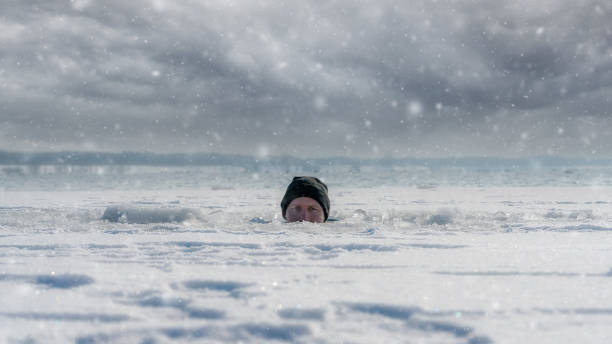
health benefits of cold best cold plunge tubs effects of cold temperature and duration power of cold
What are the real benefits of cold plunging?
Here are some of the well-documented physiological benefits of regular cold exposure:
- Improves circulation and cardiovascular function
- Releases endorphins and promotes a sense of euphoria
- Reduces inflammation that causes swelling and pain
- Boosts immunity and metabolic rate
- Improves mood and alleviates depression
- Speeds up muscle soreness and recovery
- Burns calories by activating brown fat metabolism
- Elevates willpower, focus, and concentration
- Induces a mild stress response for anti-aging benefits
The more consistently you cold plunge, the greater and more long-lasting these rewards are.
Does cold plunging burn a lot of calories?
Yes, studies show a significant increase in metabolic rate and calorie burn by exposing your body to cold. The energy required to warm your body up after cold stress increases your calorie expenditure.
One study found an 80-calorie burn after just 10 minutes immersed in 59°F water. This was caused by activation of brown adipose tissue.
Another study showed a metabolic boost equivalent to a 30% increase in energy expenditure after cold plunging 3 times per week.
What are the risks of extreme cold plunging?
It's important to slowly acclimate and not overwhelm your body with drastic temperature drops. Potential risks if you plunge into extremely cold water without building tolerance include:
- Hypothermia as core body temperature dangerously lowers
- Frostbite and loss of feeling in the limbs from prolonged submersion
- Constricted blood flow and oxygen delivery due to vasoconstriction
- Irregular heart rhythms from sudden cold heart shock
- Immune system suppression if cold stress is excessive
Always start with moderate cold exposure and gradually work to colder water temperatures.
Is cold plunging safe if you are pregnant?
Cold water immersion is typically not recommended during pregnancy. The extreme cold stress and shock can cause blood vessels to constrict, potentially inhibiting healthy blood flow to the uterus.
However, brief dips in moderately cool water during pregnancy may be tolerated. Always consult your doctor first before cold plunging while pregnant.
Should you warm up between consecutive cold plunges?
Taking breaks between each cold water immersion session is highly recommended to warm back up.
Warming up for at least 15-20 minutes allows your circulatory system to stabilize and your skin and muscles to recover.
Consecutive plunges without allowing your body to normalize can lead to cumulative stress, making it harder to thermoregulate your core temperature.
Conclusion
Finding your ideal personal cold plunge temperature is key to maximizing both the safety and benefits of this intense but rewarding form of cold therapy. Start slowly with moderate cold exposure and incrementally work to colder water temperatures as your body acclimates.
Pay close attention to how your body reacts and focus on building resilience over time. Be sure to allow proper warm-up periods between plunges. Listen to your body, be patient with yourself, and have fun safely testing your limits!
References
Recommended Temperature Ranges:
- https://www.foundmyfitness.com/topics/cold-therapy
- https://www.mensjournal.com/adventure/how-cold-is-too-cold-for-cold-water-immersion/
Benefits of Cold Water Immersion:
- https://www.ncbi.nlm.nih.gov/pmc/articles/PMC4049052/
- https://www.ncbi.nlm.nih.gov/pmc/articles/PMC6508957/
- https://www.ncbi.nlm.nih.gov/pmc/articles/PMC5980106/
Calorie Burn and Metabolism:
- https://www.sciencedirect.com/science/article/abs/pii/S1550413118302535
- https://journals.physiology.org/doi/full/10.1152/japplphysiol.00850.2018
Safety and Risks:
- https://uamshealth.com/healthlibrary2/medicalmyths/coldbathschestpain/
- https://www.foundmyfitness.com/topics/cold-stress
Pregnancy Safety:
Warm Up Periods:
